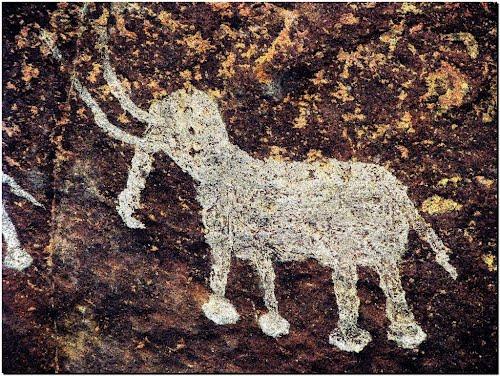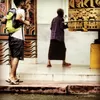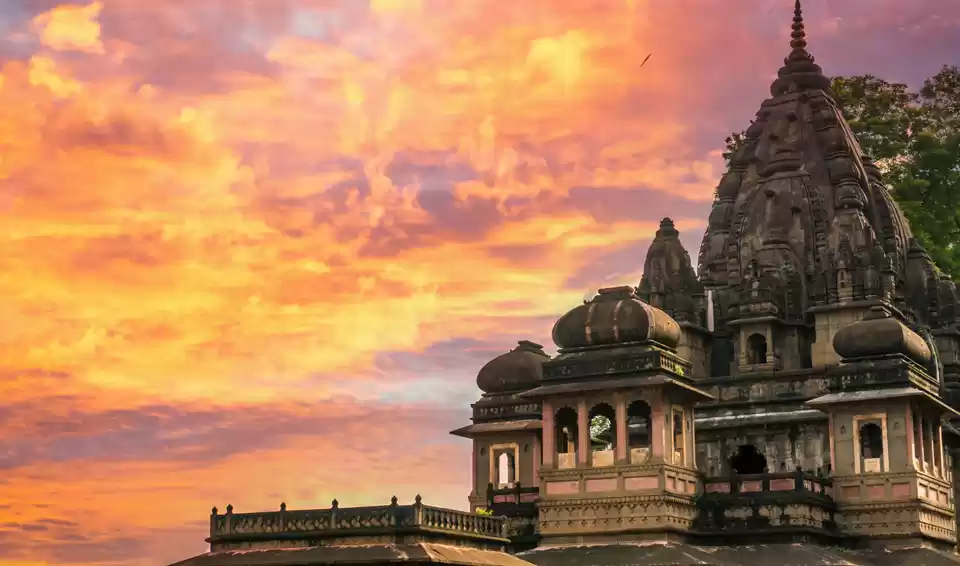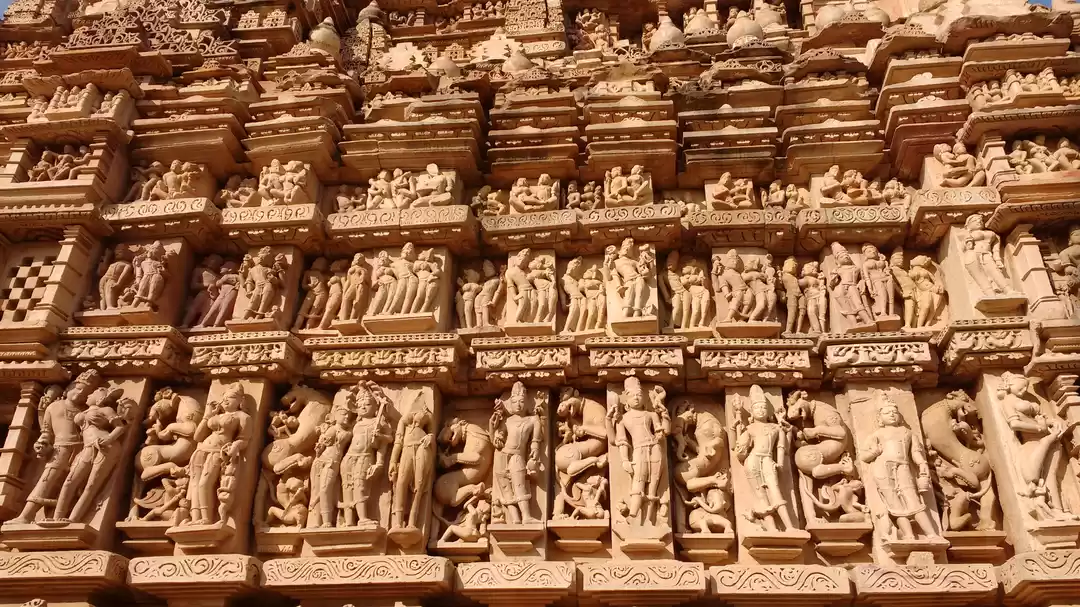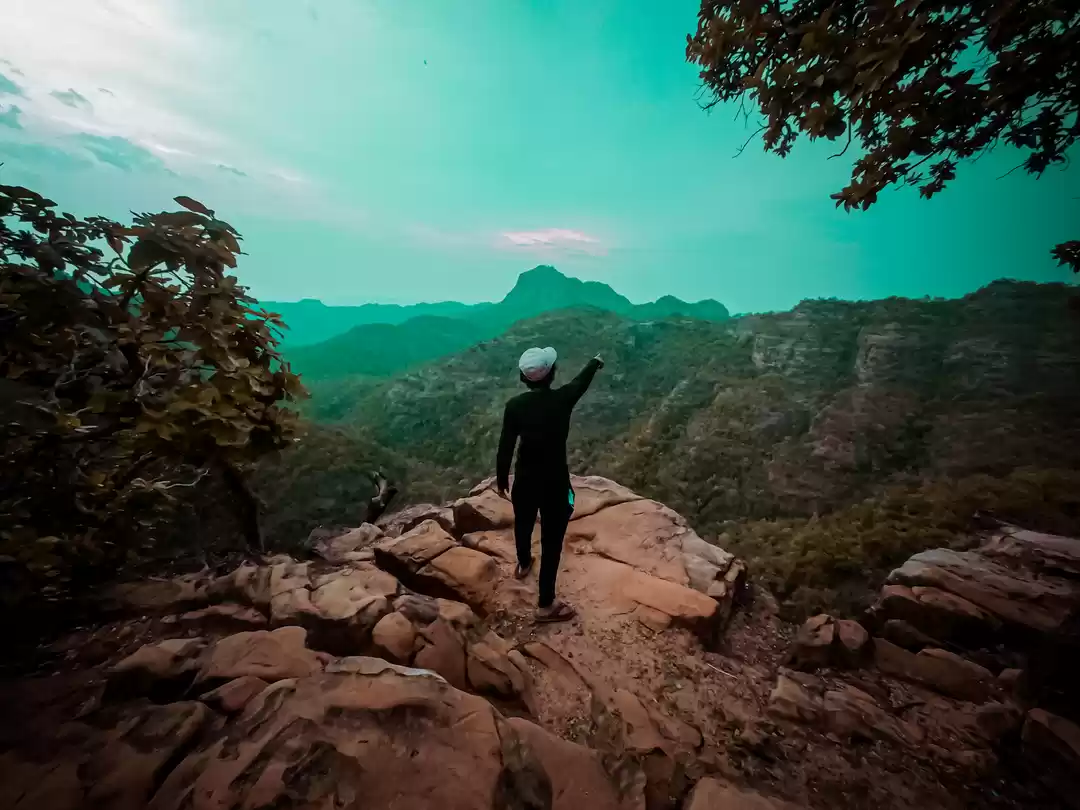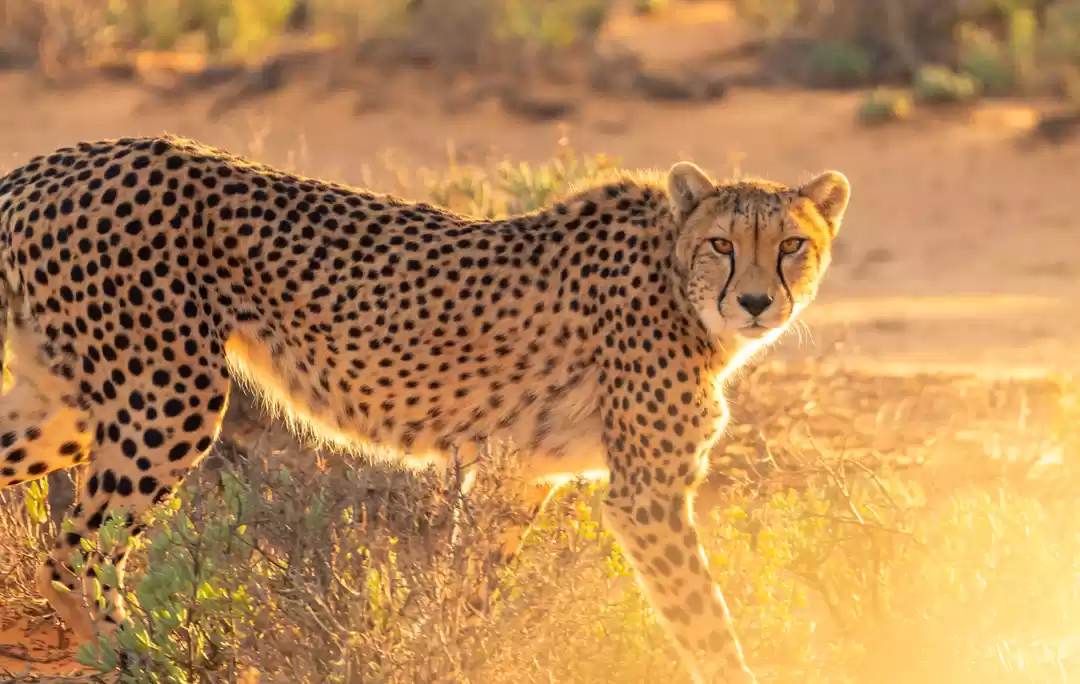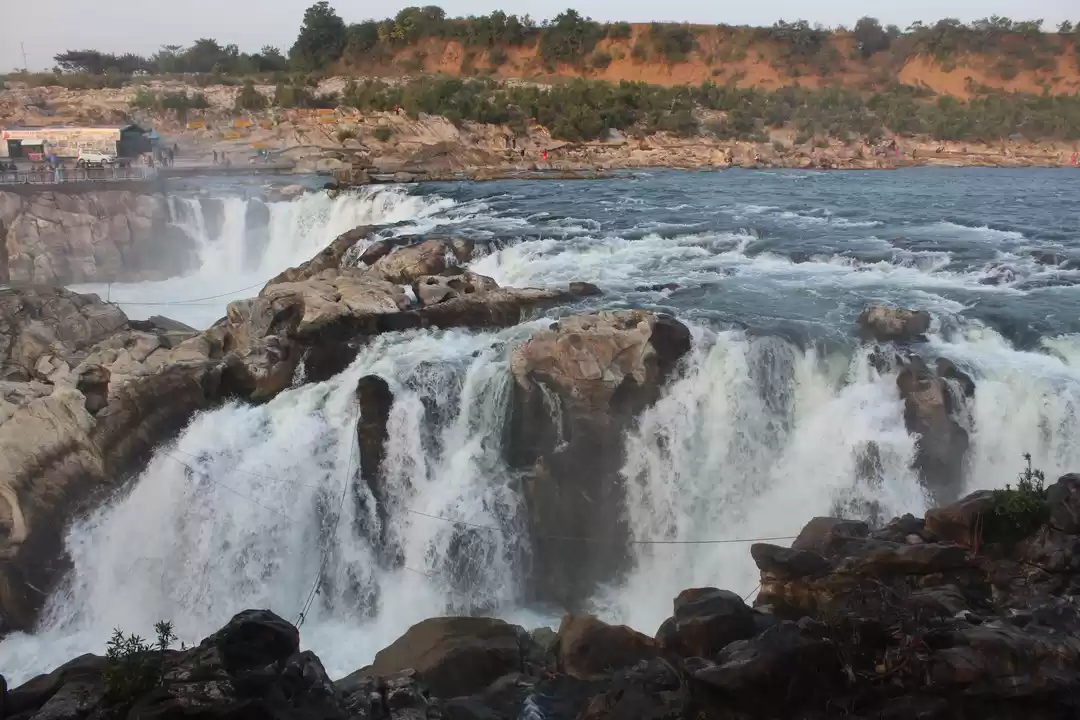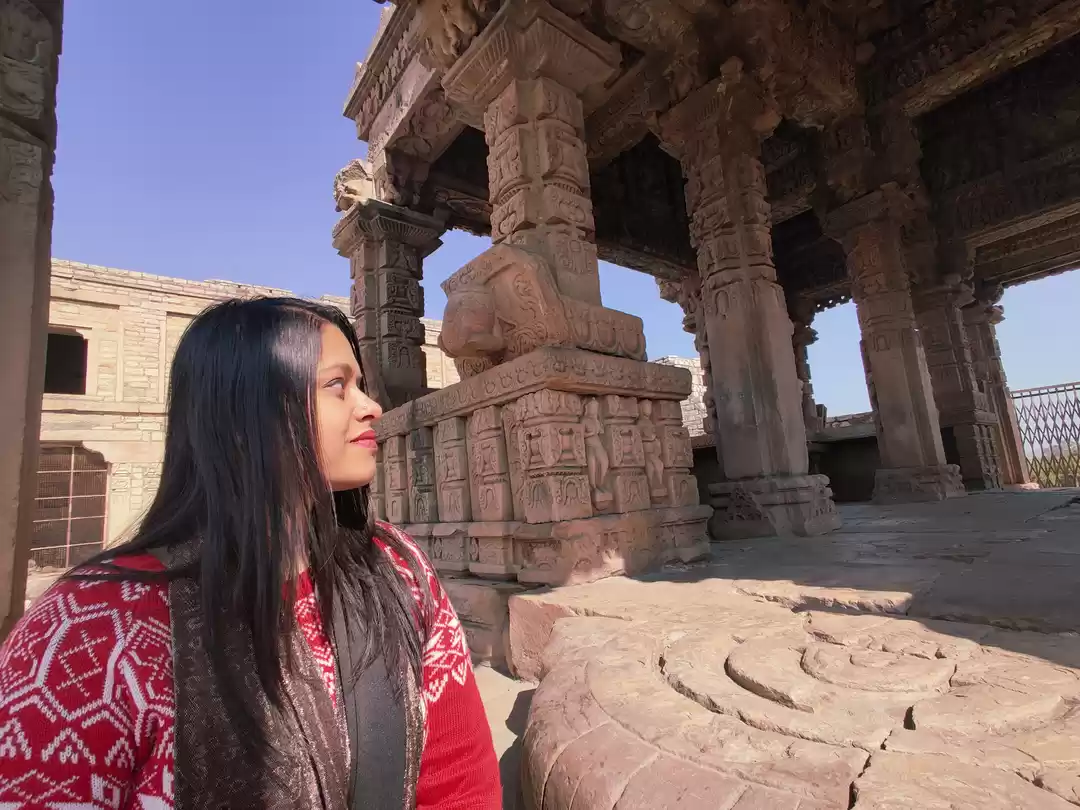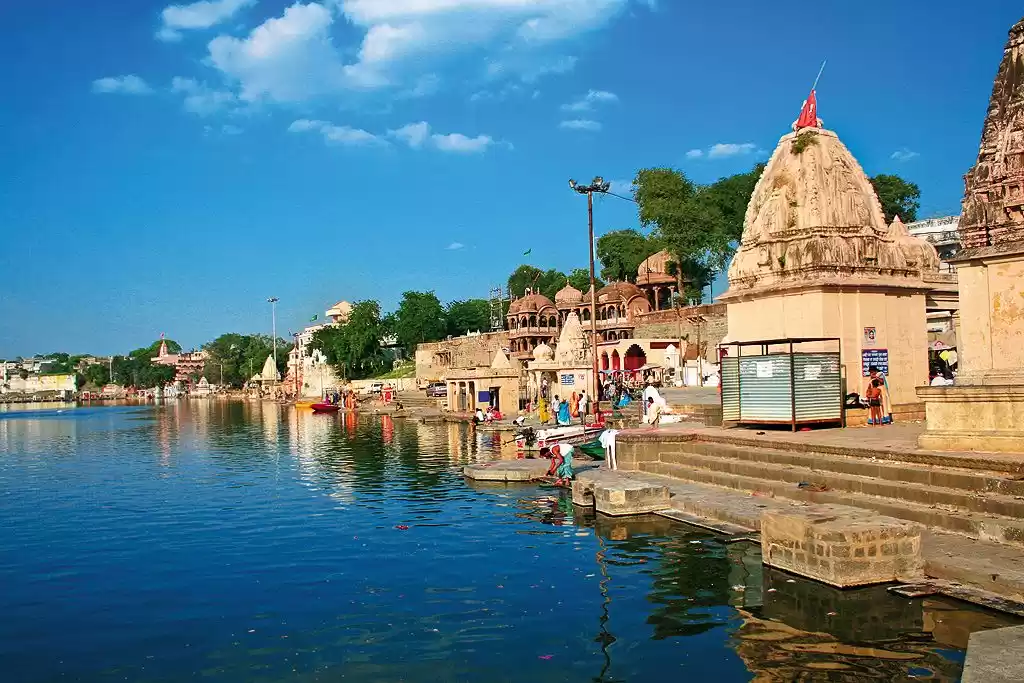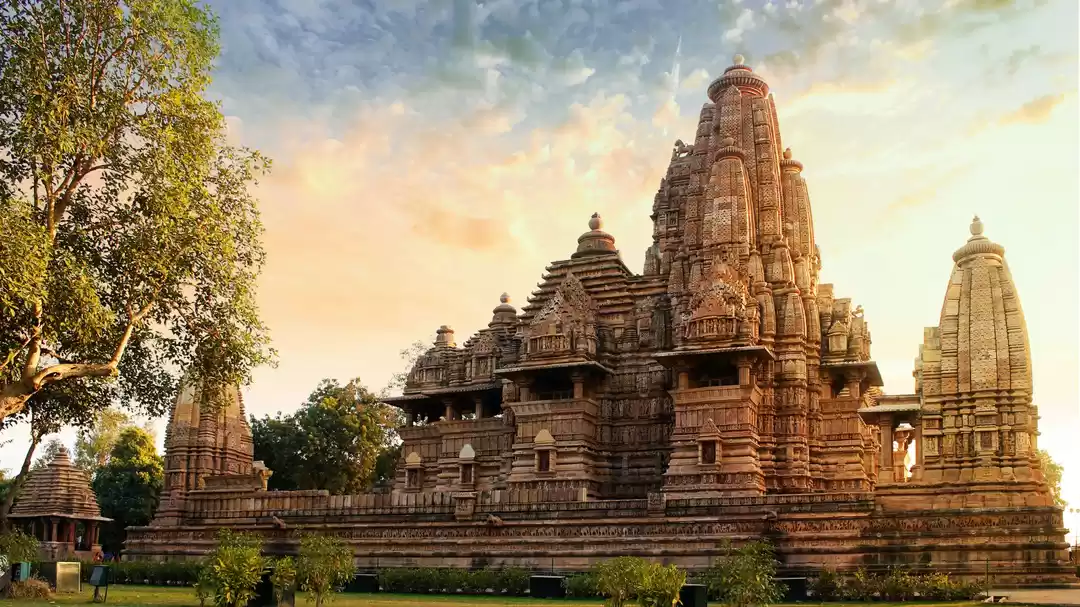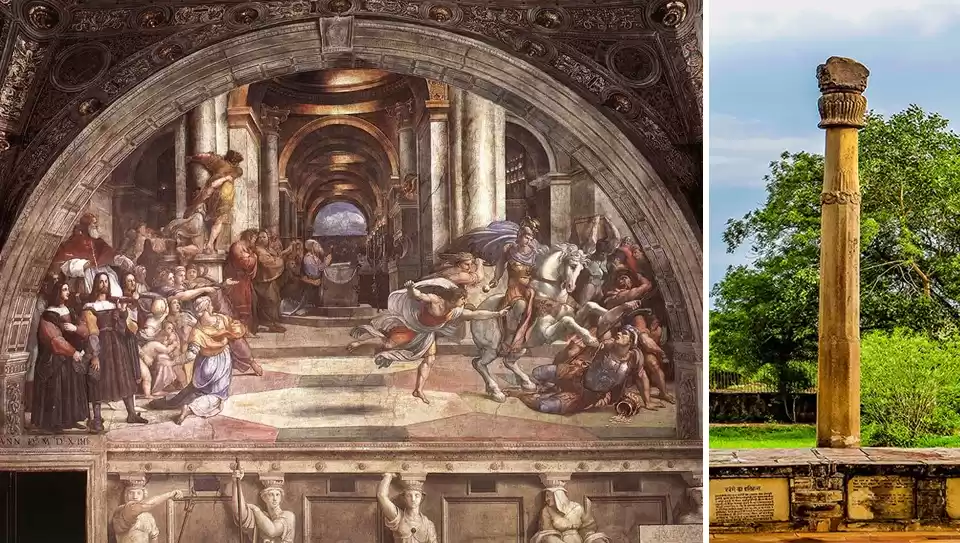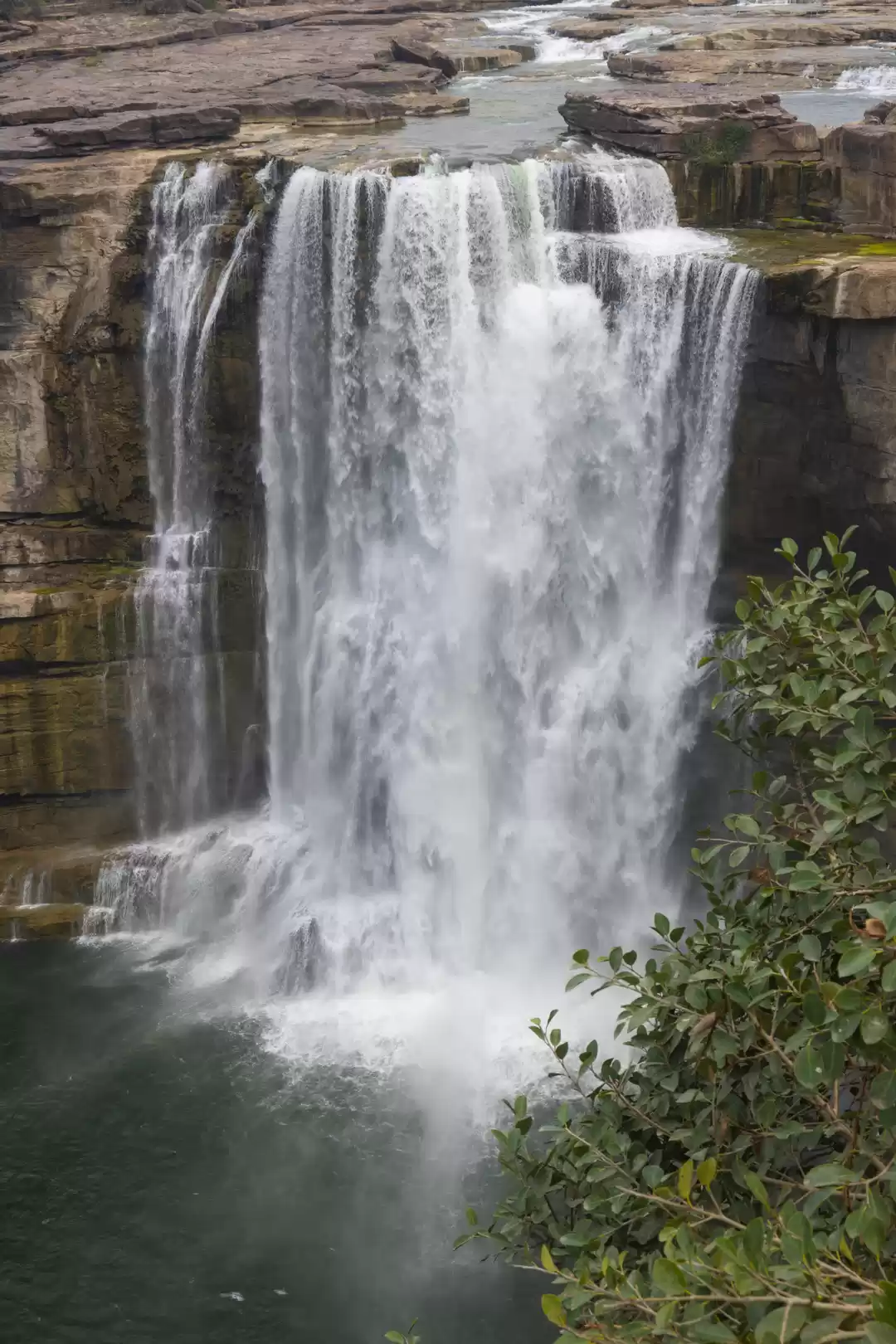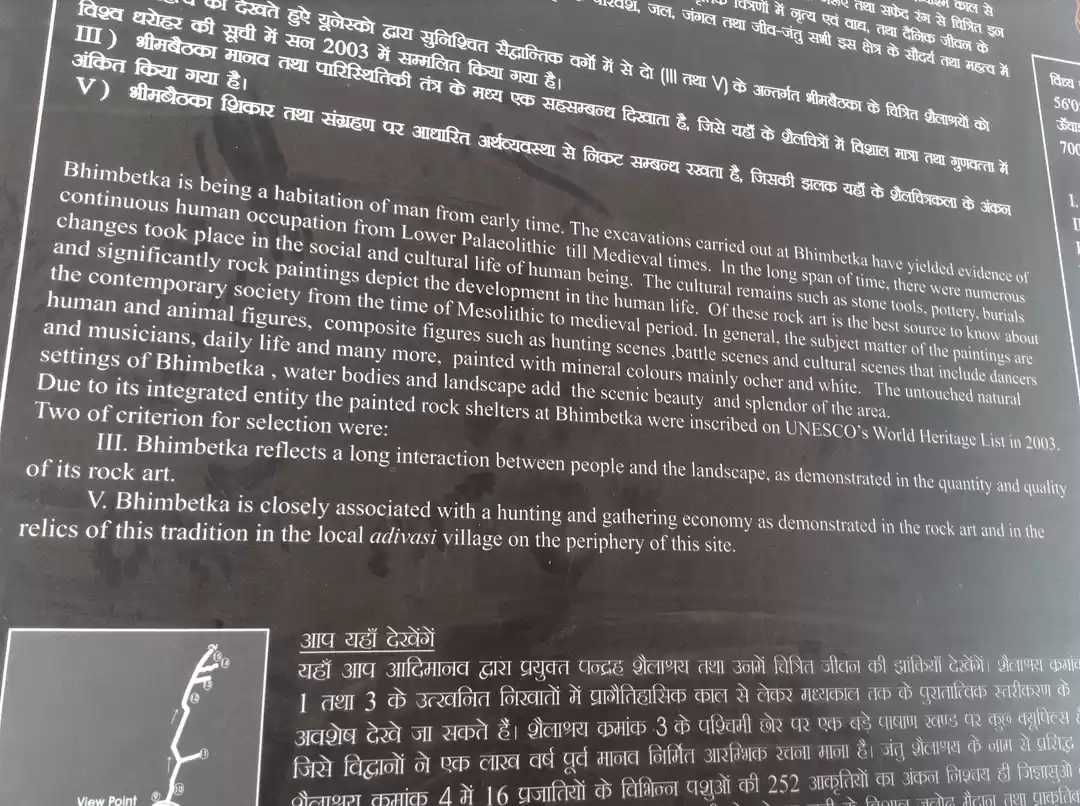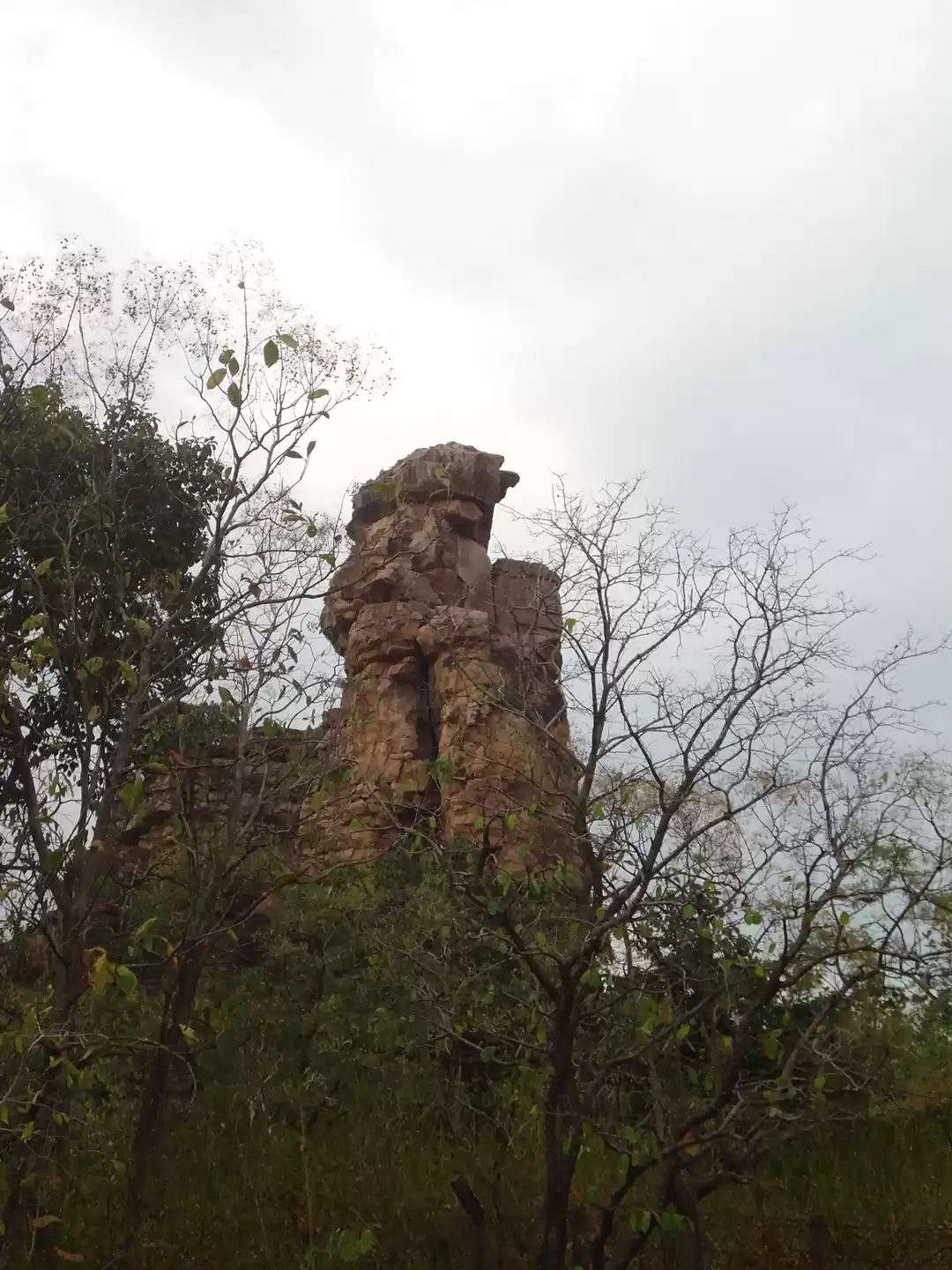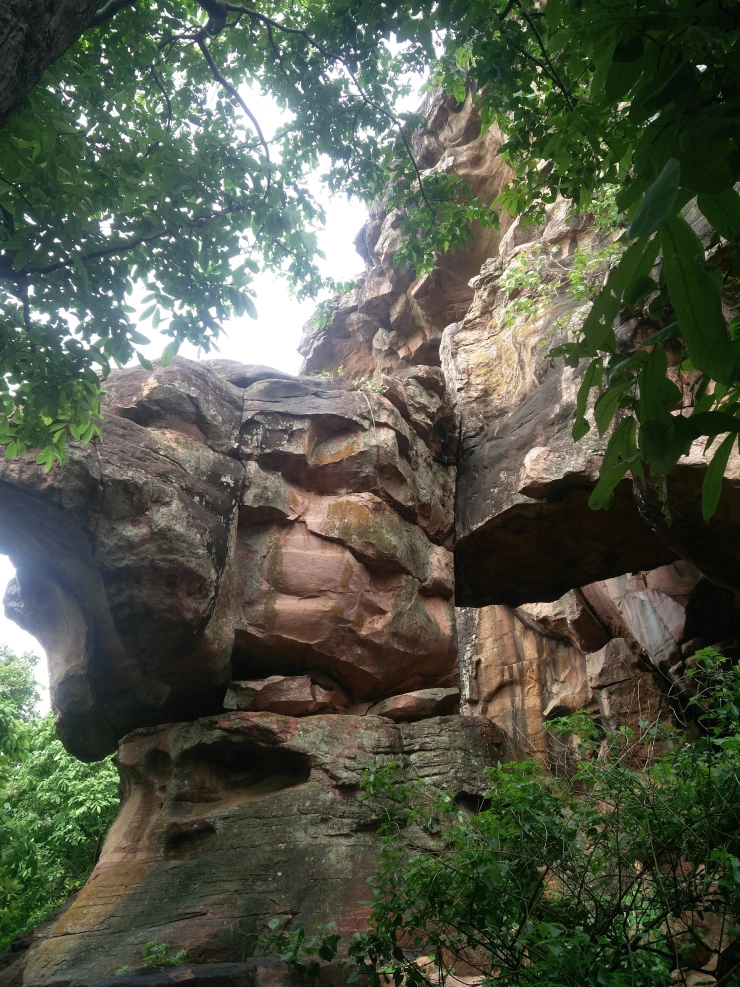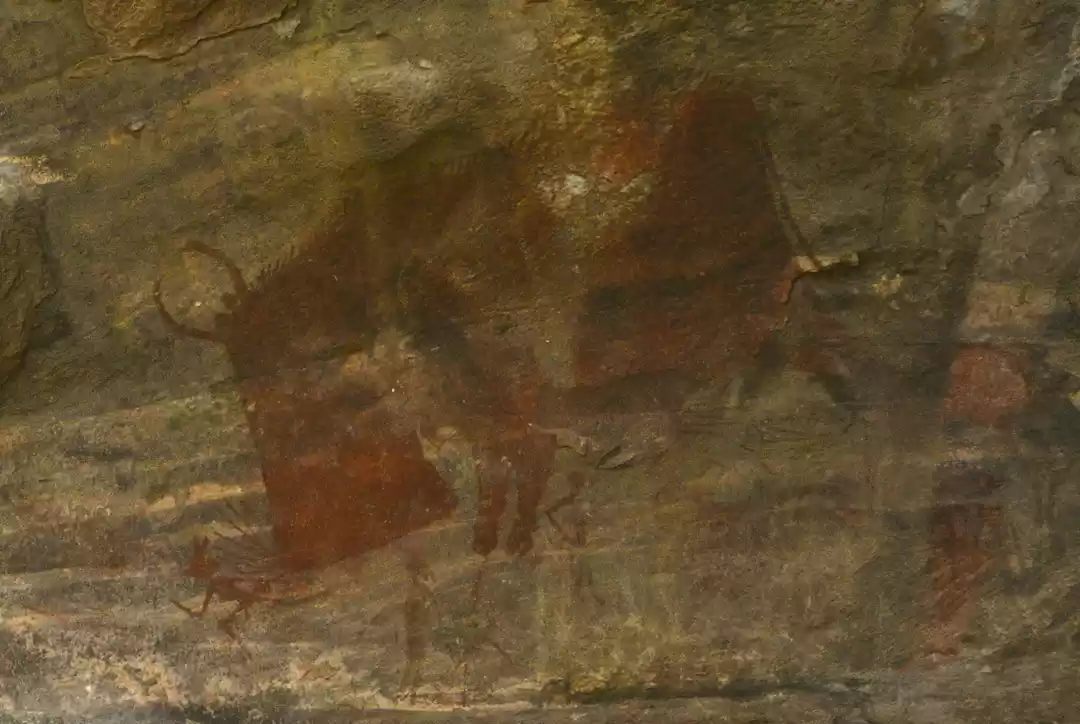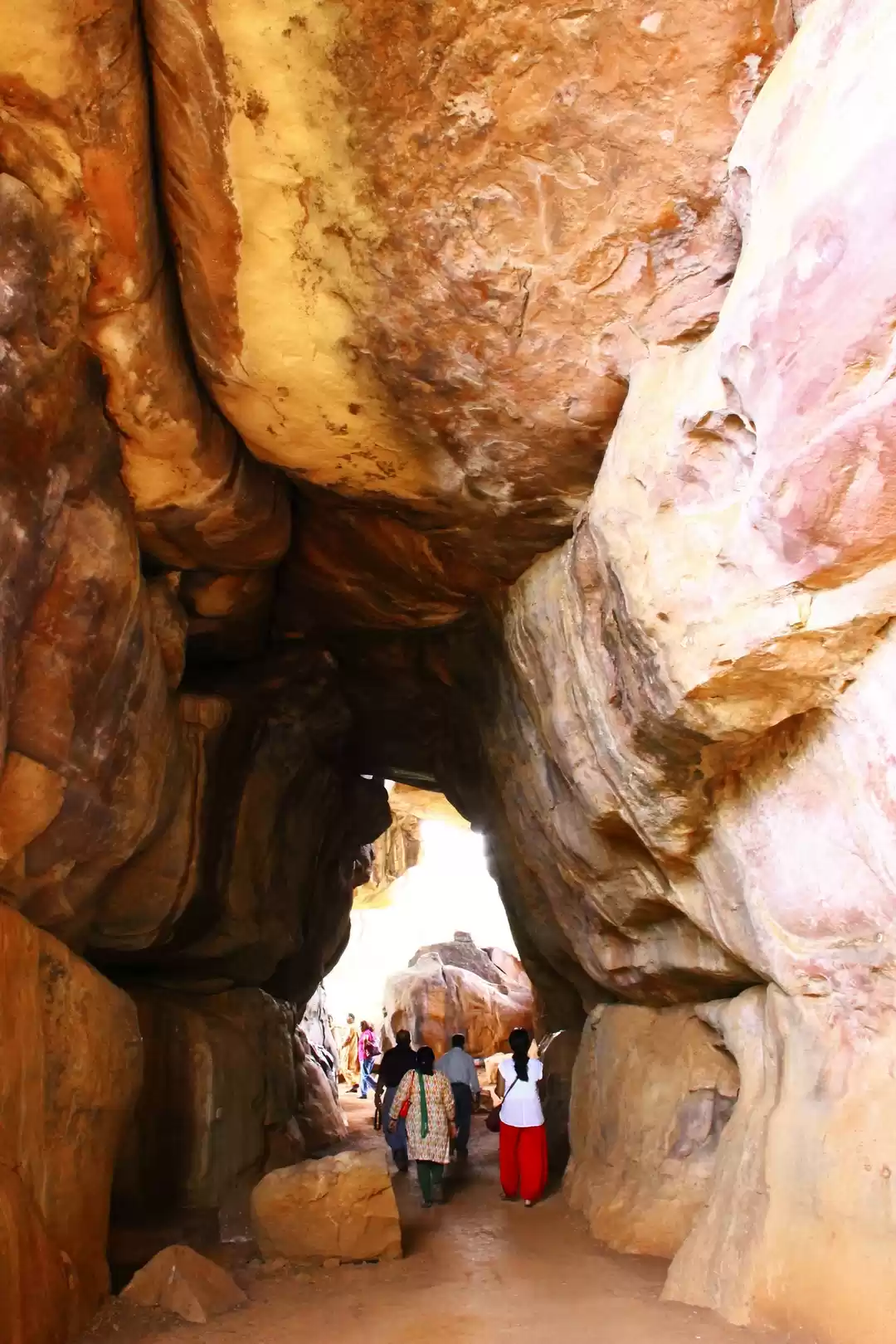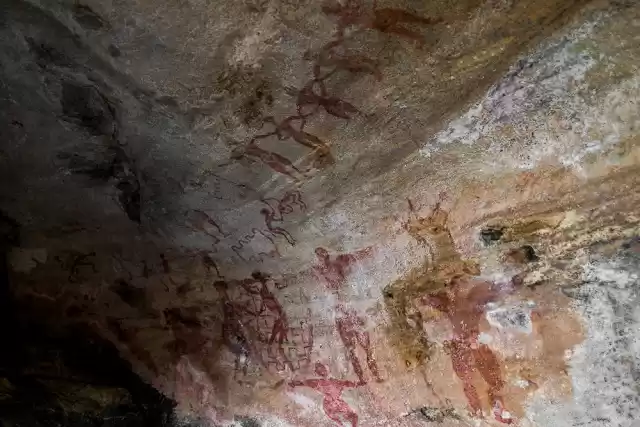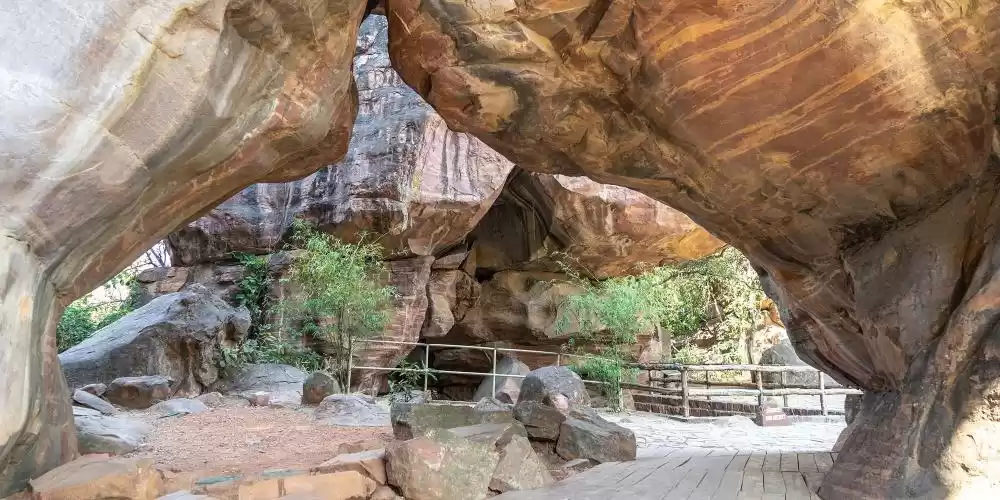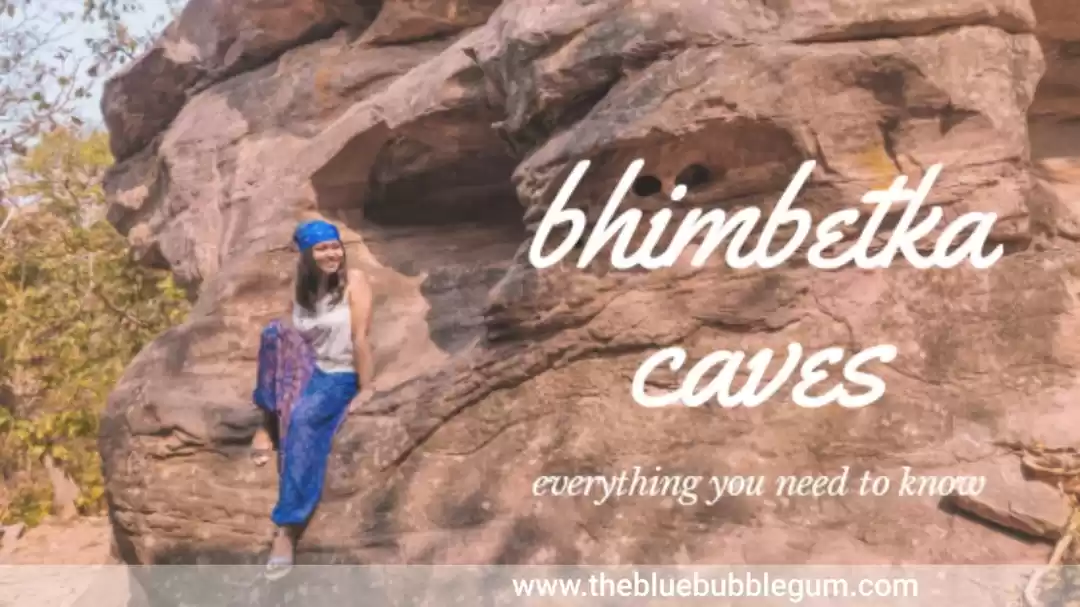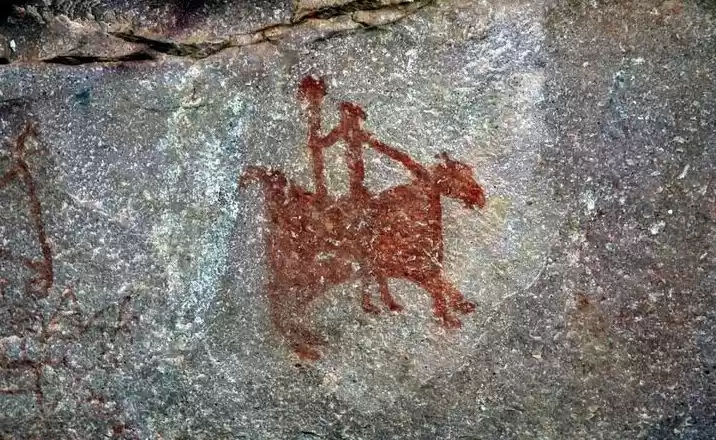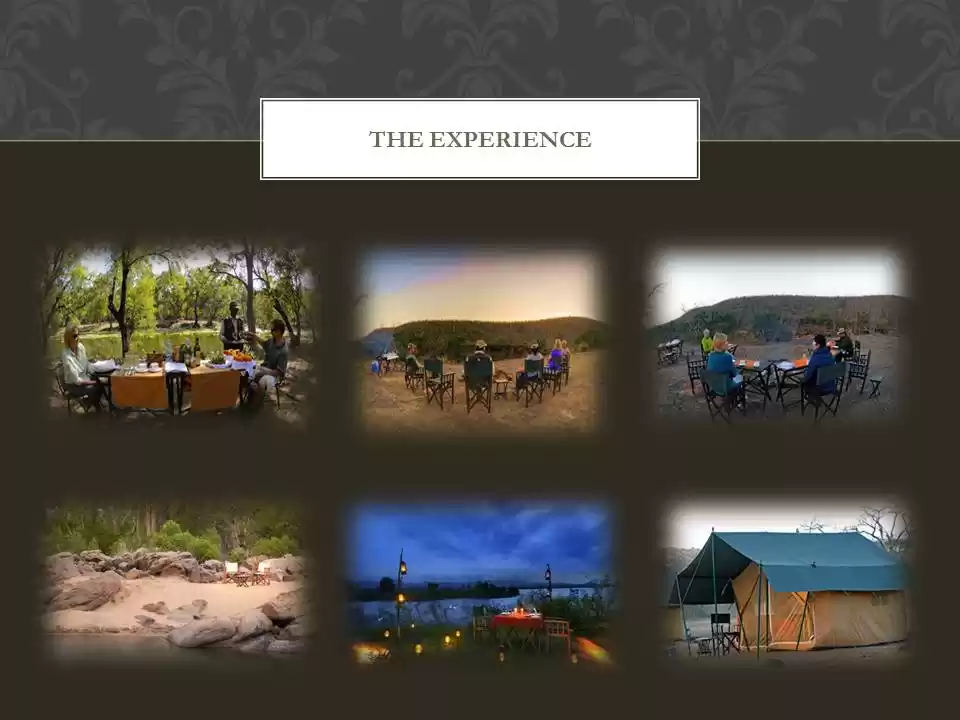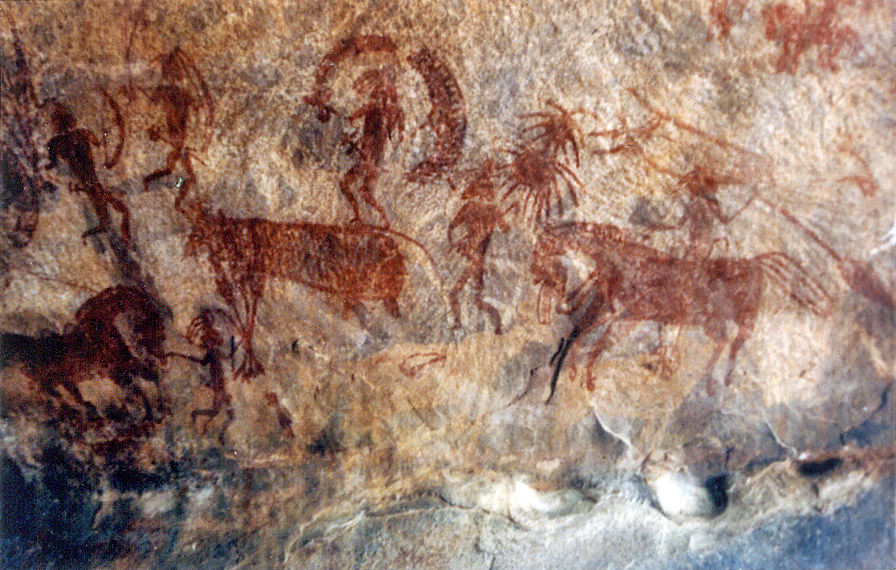

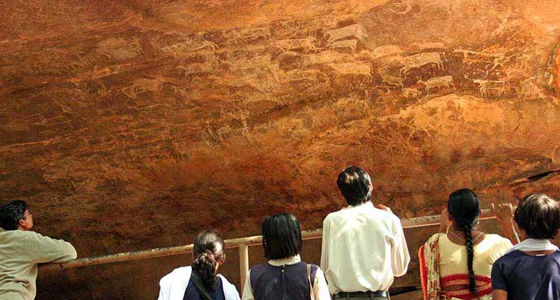
The Rock Shelters of Bhimbetka are in the foothills of the southern edge of the central Indian plateau. Within huge sandstone outcrops, above a thick forest, lie the clusters of natural rock shelters, displaying paintinThe Rock Shelters of Bhimbetka are in the foothills of the southern edge of the central Indian plateau. Within huge sandstone outcrops, above a thick forest, lie the clusters of natural rock shelters, displaying paintings from the Mesolithic Period right till the historical period. The cultural traditions of the inhabitants of the livelihood adjacent to the location bear a strong likeness to those represented in the rock paintings. Coordinated just below the Vindhyan Mountains, Bhimbetka reflects history of interaction between people and the landscape. It is linked with a hunting and gathering economy, as demonstrated in the rock art and in the relicts of this tradition in the local adivasi villages on the periphery of the site. The nominated Bhimbetka rock shelters site lies within an area of massively sculpted sandstone rock formations.
